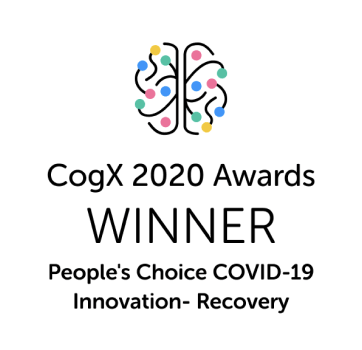What is Lean software development?
Lean software development is an agile approach that focuses on delivering maximum value to customers while minimising wasted effort. The methodology focuses on iterative development, continuous feedback and team empowerment. This makes sure that software is of high-quality and meets customer needs.
Lean software development is derived from Lean manufacturing, which Toyota pioneered in the mid-20th century. A study by McKinsey revealed that businesses adopting Lean software development methods cut their time-to-market by up to 50% and boosted customer satisfaction scores by 25%.
How is it different from traditional software development?
Unlike traditional software development methodologies, like the waterfall model, which often follows rigid, sequential processes, Lean software development prioritises flexibility and iterative progress.
Furthermore, while traditional models may focus on exhaustive documentation and upfront planning, Lean development encourages just-in-time planning and adaptive processes, making it well-suited for dynamic business environments.
7 key principles of Lean software development
Lean software development follows 7 key principles. Let’s understand how they benefit businesses.
1 - Eliminate waste
This principle focuses on removing any activity or feature that doesn't add value to the customer. It involves identifying unnecessary steps in the development process, such as redundant documentation, excessive features or delays and eliminating them to enhance efficiency.
2 - Build quality in
This principle makes sure that quality is an integral part of every stage of the development process. It involves practices like automated testing, code reviews and continuous integration to detect and fix issues early, reducing the cost of defects.
3 - Create knowledge
Lean development understands that learning is an ongoing process and therefore encourages teams to continuously learn and adapt. This is achieved through experimenting with new approaches and maintaining a culture of knowledge sharing.
4 - Defer commitment
This principle promotes flexibility by keeping options open and delaying decisions until enough data is available to make informed choices. It helps avoid making irreversible decisions prematurely, thereby reducing the risk of costly mistakes.
5 - Deliver fast
Fast delivery of software is integral to Lean software development and gives customers what they want as quickly as possible. This can be achieved by frequent releases, small batch sizes and minimising wait times between processes.
6 - Respect people
Lean development recognises that empowered and motivated individuals are at the core of successful development. This principle includes fostering a collaborative environment, valuing team contributions and providing opportunities for professional growth.
7 - Optimise the whole
Lean development looks at the development process as an interconnected system rather than focusing on individual parts. This principle emphasises end-to-end optimisation to make sure that the entire process is efficient and aligned with delivering customer value.
Advantages and challenges of Lean software development
While there are many advantages to adopting a Lean software development approach, you must be prepared to address some of the challenges to realise these advantages.
Advantages | Challenges |
Increased efficiency | Cultural resistance |
Reduced time to market | Balancing quality and speed |
Improved customer satisfaction | Scaling issues |
Cost reduction | Measuring progress |
Advantages for business
Increased efficiency
Lean software development focuses on eliminating waste and optimising workflows. This means that unnecessary steps and redundant tasks are removed, leading to a more efficient use of resources.
Reduced time to market
Lean involves iterative and incremental development, where small, manageable pieces of the project are completed and delivered in short cycles. This approach helps in identifying and addressing issues early, further accelerating the delivery process.
Improved customer satisfaction
Lean practices prioritise customer feedback and value, ensuring that the final product aligns closely with user expectations and needs.
Cost reduction
By eliminating non-value-adding activities, Lean development reduces costs associated with inefficiencies and rework. According to Deloitte’s Global Cost Survey, companies implementing Lean practices saw cost reductions of 15–25% in their software projects.
Challenges to consider
Cultural resistance
Making sure that all team members understand and embrace Lean principles can be challenging. Comprehensive training and ongoing support are necessary to overcome cultural resistance and foster a Lean mindset.
Balancing quality and speed
Teams must find the right balance between delivering quickly and maintaining high-quality standards. According to a survey by Stack Overflow, 45% of developers struggle with balancing quality and speed in Lean environments.
Measuring progress
Defining appropriate metrics to track progress in a Lean environment can be challenging, as traditional metrics may not fully capture the benefits of Lean, such as improved efficiency and customer satisfaction.
Maintains long-term focus
While Lean emphasises quick wins, maintaining a long-term vision can be challenging. A report by the Lean Enterprise Institute shows that 30% of businesses abandon Lean practices within 2 years due to a lack of long-term focus.
Future of Lean software development
Lean software development continues to evolve. There are many emerging trends that can affect Lean development.
Integration with Agile methodologies
Lean and Agile are complementary, with shared goals of flexibility and value-driven development. The integration of Lean principles into Agile practices can amplify their benefits. Agile teams can adopt Lean's focus on optimising the entire system and eliminating waste, while Lean can leverage Agile's iterative frameworks like Scrum or Kanban to enhance collaboration and adaptability.
AI and automation
Tools powered by AI can help identify waste, streamline workflows and improve decision-making. Machine Learning algorithms can also enhance predictive analytics, enabling teams to anticipate challenges and optimise processes proactively.
FAQ
Q1 - What is lean software development?
Lean software development is an agile methodology focused on delivering high-quality software by minimising waste, optimising processes and prioritising customer value.
Q2 - How does lean software development improve efficiency?
It improves efficiency by eliminating unnecessary steps, automating repetitive tasks, encouraging continuous feedback and focusing on delivering value-driven features quickly.
Q3 - What are the key principles of lean software development?
The key principles include eliminating waste, building quality into the process, delivering fast, optimising the whole system, empowering teams, delaying decisions until necessary and continuously improving.
Q4 - Is lean software development suitable for all projects?
It works best for projects requiring flexibility, iterative development, and close collaboration. However, it may not suit highly regulated or fixed-scope projects with rigid requirements.
Q5 - How does lean software development compare to other methodologies?
Lean focuses on efficiency and waste reduction, unlike traditional methods like Waterfall, which are more linear, or Scrum, which emphasises sprints and predefined roles. Lean is adaptable and emphasises continuous improvement throughout the project lifecycle.
Get a free app prototype now!
Bring your software to life in under 10 mins. Zero commitments.


 Facebook
Facebook X
X LinkedIn
LinkedIn YouTube
YouTube Instagram
Instagram RSS
RSS


